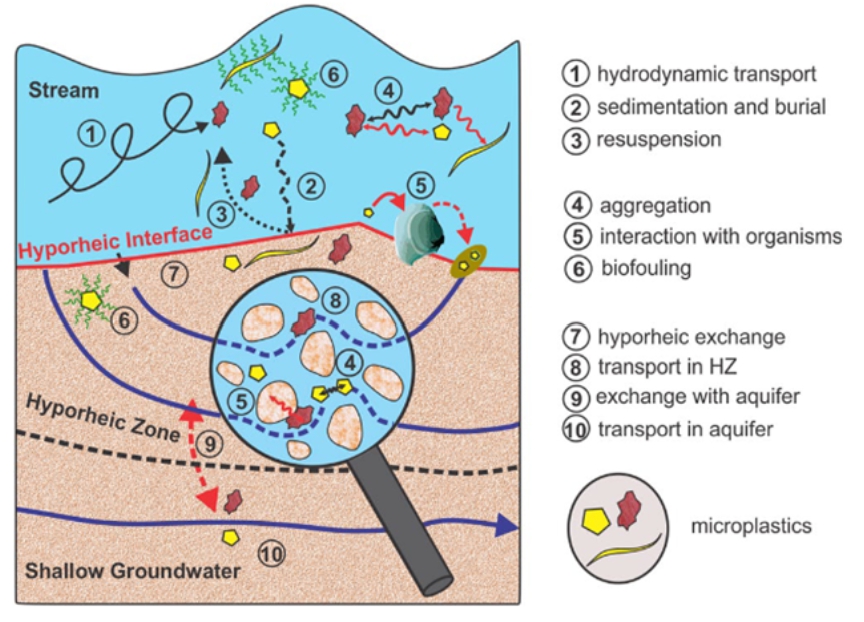Transport and fate in rivers and lakes
Rivers and lakes are important pathways and sinks for microplastics (MP) in inland areas. While studies show that MP particles are present in these ecosystems, little is known on the transport pathways and fate of the particles. We therefore investigate the fundamental transport mechanisms and pathways to improve the understanding of transport and fate of MP in these ecosystems. For lake environments, the particle transport and spatial distribution is investigated. Field experiments deliver valuable insights on the relevant processes. The findings are enriched and with accompanying numerical studies. In rivers, we focus on the transport of particles at the interface between surface water and the riverbed sediment, as well as the mobility of MP in within the sediment. Using novel monitoring techniques, we track the propagation of MP with in the sediment body in a laboratory flume. Hydro-numerical models are developed and used to extrapolate the findings to natural scales. The work allows us to determine conditions under which riverbed sediments are sources or sinks for MP.
Contributing Scientists
Christian Schmidt
Jan H. Fleckenstein
Project
CRC 1357 Mikroplastik (2019-2026), funded by DFG (German Research Foundation) – Project Number 391977956
Publications
[1] Elagami, H., Ahmadi, P., Fleckenstein, J.H., Frei, S., Obst, M., Agarwal, S., Gilfedder, B.S., 2022. Measurement of microplastic settling velocities and implications for residence times in thermally stratified lakes. Limnology & Oceanography lno.12046. https://doi.org/10.1002/lno.12046
[2] Ahmadi, P., Elagami, H., Dichgans, F., Schmidt, C., Gilfedder, B.S., Frei, S., Peiffer, S., Fleckenstein, J.H., 2022. Systematic Evaluation of Physical Parameters Affecting the Terminal Settling Velocity of Microplastic Particles in Lakes Using CFD. Front. Environ. Sci. 10, 875220. https://doi.org/10.3389/fenvs.2022.875220
[3] Boos, J.-P., Dichgans, F., Gilfedder, B.-S., Frei, S., 2022. An Experimental Method to Quantitatively Assess the Transport of Microplastic Particles in Fluvial Systems, in: Proceedings of the 39th IAHR World Congress. Presented at the 39th IAHR World Congress From Snow to Sea, International Association for Hydro-Environment Engineering and Research (IAHR), pp. 5030–5034. https://doi.org/10.3850/IAHR-39WC252171192022487
[4] Schmidtmann, J., Elagami, H., Gilfedder, B.S., Fleckenstein, J.H., Papastavrou, G., Mansfeld, U., Peiffer, S., 2022. Heteroaggregation of PS microplastic with ferrihydrite leads to rapid removal of microplastic particles from the water column. Environ. Sci.: Processes Impacts 24, 1782–1789. https://doi.org/10.1039/D2EM00207H

